An Automatic Self Shape-Shifting Soft Mobile Robot (A4SMR)
Abstract
1. Introduction
2. Pneumatic Artificial Muscle
3. Robot Design
3.1. Squeezed Mobile Robot
| Algorithm 1. The movement restriction |
| 1: Take Figure 6 as a reference. 2: Set the top of the proposed robot as terminal 1. 3: Set the bottom of the Robot as terminal 2. 4: In the pressurising process, terminal 1 restricts, and terminal 2 keeps free to move. The rear of the robot moves forward due to contraction behaviour. 5: During the venting process, terminal 1 sets to free, and terminal 2 is restricted. The robot will move forward at a similar distance. 6: Repeat 4 and 5 to keep moving forward. |
3.2. Passing through Narrow Paths
4. Robot Kinematics
5. Test and Validation
6. Conclusions
Author Contributions
Funding
Institutional Review Board Statement
Data Availability Statement
Acknowledgments
Conflicts of Interest
References
- Alves, R.M.F.; Lopes, C.R. Obstacle avoidance for mobile robots: A Hybrid Intelligent System based on Fuzzy Logic and Artificial Neural Network. In Proceedings of the 2016 IEEE International Conference on Fuzzy Systems (FUZZ-IEEE), Vancouver, BC, Canada, 24–29 July 2016; pp. 1038–1043. [Google Scholar] [CrossRef]
- Navabi, H.; Sadeghnejad, S.; Ramezani, S.; Baltes, J. Position control of the single spherical wheel mobile robot by using the fuzzy sliding mode controller. Adv. Fuzzy Syst. 2017, 2017, 2651976. [Google Scholar] [CrossRef]
- Shabalina, K.; Sagitov, A.; Magid, E. Comparative Analysis of Mobile Robot Wheels Design. In Proceedings of the 2018 11th International Conference on Developments in eSystems Engineering (DeSE), Cambridge, UK, 2–5 September 2018; pp. 175–179. [Google Scholar]
- Bačík, J.; Tkáč, P.; Hric, L.; Alexovič, S.; Kyslan, K.; Olexa, R.; Perduková, D. Phollower—The Universal Autonomous Mobile Robot for Industry and Civil Environments with COVID-19 Germicide Addon Meeting Safety Requirements. Appl. Sci. 2020, 10, 7682. [Google Scholar] [CrossRef]
- Maurelli, F.; Dineva, E.; Nabor, A.; Birk, A. Robotics and Intelligent Systems: A New Curriculum Development and Adaptations Needed in Coronavirus Times. In Robotics in Education; Springer: Berlin/Heidelberg, Germany, 2022; pp. 81–93. [Google Scholar]
- Guccione, S.; Muscato, G. The wheeleg robot—Control strategies, computing architectures, and experimental results of the hybrid wheeled/legged robot. IEEE Robot. Autom. Mag. 2003, 10, 33–43. [Google Scholar] [CrossRef]
- Carpentier, J.; Wieber, P.-B. Recent Progress in Legged Robots Locomotion Control. Curr. Robot. Rep. 2021, 2, 231–238. [Google Scholar] [CrossRef]
- Al-Ibadi, A.; Nefti-Meziani, S.; Davis, S. Design, Kinematics and Controlling a Novel Soft Robot Arm with Parallel Motion. Robotics 2018, 7, 19. [Google Scholar] [CrossRef]
- Tian, Y.; Yao, Y.-A.; Ding, W.; Xun, Z. Design and locomotion analysis of a novel deformable mobile robot with worm-like, self-crossing and rolling motion. Robot. 2016, 34, 1961–1978. [Google Scholar] [CrossRef]
- Khairullah, Y.; Marhoon, A.; Rashid, M.; Rashid, A. Multi Robot System Dynamics and Path Tracking. Iraqi J. Electr. Electron. Eng. 2020, 16, 1–7. [Google Scholar] [CrossRef]
- Zhang, L.; Liu, L.; Zhang, S. Design, Implementation, and Validation of Robust Fractional-Order PD Controller for Wheeled Mobile Robot Trajectory Tracking. Complex. 2020, 2020, 9523549. [Google Scholar] [CrossRef]
- Liu, J.; Tong, Y.; Liu, J. Review of snake robots in constrained environments. Rob. Auton. Syst. 2021, 141, 103785. [Google Scholar] [CrossRef]
- Bujňák, M.; Pirník, R.; Rástočný, K.; Janota, A.; Nemec, D.; Kuchár, P.; Tichý, T.; Łukasik, Z. Spherical Robots for Special Purposes: A Review on Current Possibilities. Sens. 2022, 22, 1413. [Google Scholar] [CrossRef]
- Chase, R.; Pandya, A. A Review of Active Mechanical Driving Principles of Spherical Robots. Robot. 2012, 1, 3–23. [Google Scholar] [CrossRef]
- Hou, L.; Zhang, L.; Kim, J. Energy Modeling and Power Measurement for Mobile Robots. Energ. 2018, 12, 27. [Google Scholar] [CrossRef]
- AL-Forati, I.S.A.; Rashid, A.; Al-Ibadi, A. IR Sensors Array for Robots Localization Using K Means Clustering Algorithm. Int. J. Simul. Syst. Sci. Technol. 2019, 20, 12. [Google Scholar] [CrossRef]
- Jiang, H.; Wang, H.; Yau, W.-Y.; Wan, K.-W. A Brief Survey: Deep Reinforcement Learning in Mobile Robot Navigation. In Proceedings of the 2020 15th IEEE Conference on Industrial Electronics and Applications (ICIEA), Kristiansand, Norway, 9–13 November 2020; IEEE; pp. 592–597. [Google Scholar]
- Jung, Y.H.; Cho, D.H.; Hong, J.W.; Han, S.H.; Cho, S.B.; Shin, D.Y.; Lim, E.T.; Kim, S.S. Development of Multi-Sensor Module Mounted Mobile Robot for Disaster Field Investigation. Int. Arch. Photogramm. Remote Sens. Spat. Inf. Sci. 2022, 43, 1103–1108. [Google Scholar] [CrossRef]
- Nalepa, B.; Gwiazda, A.; Banas, W. Investigation of movement of mobile robot work. IOP Conf. Ser. Mater. Sci. Eng. 2018, 400, 052007. [Google Scholar] [CrossRef]
- Rahmaniar, W.; Wicaksono, A. Design and Implementation of a Mobile Robot for Carbon Monoxide Monitoring. J. Robot. Control 2020, 2, 1–6. [Google Scholar] [CrossRef]
- Girdhar, Y.; Dudek, G. Modeling curiosity in a mobile robot for long-term autonomous exploration and monitoring. Auton. Robots 2016, 40, 1267–1278. [Google Scholar] [CrossRef]
- Sumiya, T.; Matsubara, Y.; Nakano, M.; Sugaya, M. A Mobile Robot for Fall Detection for Elderly-Care. Procedia Comput. Sci. 2015, 60, 870–880. [Google Scholar] [CrossRef]
- Rostami, S.M.H.; Sangaiah, A.K.; Wang, J.; Liu, X. Obstacle avoidance of mobile robots using modified artificial potential field algorithm. EURASIP J. Wirel. Commun. Netw. 2019, 2019, 70. [Google Scholar] [CrossRef]
- Hutabarat, D.; Rivai, M.; Purwanto, D.; Hutomo, H. Lidar-based Obstacle Avoidance for the Autonomous Mobile Robot. In Proceedings of the 2019 12th International Conference on Information & Communication Technology and System (ICTS), Surabaya, Indonesia, 18 July 2019; IEEE; pp. 197–202. [Google Scholar]
- Abdouni, J.; Jarou, T.; Waga, A.; El Idrissi, S.; El mahri, M.; Sefrioui, I. A new sampling strategy to improve the performance of mobile robot path planning algorithms. In Proceedings of the 2022 International Conference on Intelligent Systems and Computer Vision (ISCV), Fez, Morocco, 18–20 May 2022; IEEE; pp. 1–7. [Google Scholar]
- César-Tondreau, B.; Warnell, G.; Kochersberger, K.; Waytowich, N.R. Towards Fully Autonomous Negative Obstacle Traversal via Imitation Learning Based Control. Robotics 2022, 11, 67. [Google Scholar] [CrossRef]
- Liang, D.; Sun, N.; Wu, Y.; Chen, Y.; Fang, Y.; Liu, L. Energy-Based Motion Control for Pneumatic Artificial Muscle Actuated Robots with Experiments. IEEE Trans. Ind. Electron. 2022, 69, 7295–7306. [Google Scholar] [CrossRef]
- Wang, Q.; Liu, G.; Yang, T.; Chen, H.; Qin, Y.; Sun, N. Dynamic Modeling and Analysis for Parallel Robots Actuated by Pneumatic Artificial Muscles. In Control, Instrumentation and Mechatronics: Theory and Practice; Springer: Singapore, 2022; pp. 22–33. [Google Scholar]
- Al Abeach, L.A.T.; Nefti-Meziani, S.; Davis, S. Design of a Variable Stiffness Soft Dexterous Gripper. Soft Robot. 2017, 4, 274–284. [Google Scholar] [CrossRef] [PubMed]
- Al-Ibadi, A. The Design and Implementation of a Single-Actuator Soft Robot Arm for Lower Back Pain Reduction. Iraqi J. Electr. Electron. Eng. 2020, sceeer, 25–29. [Google Scholar] [CrossRef]
- Robinson, G.; Davies, J.B.C. Continuum robots—A state of the art. In Proceedings of the 1999 IEEE International Conference on Robotics and Automation (Cat. No.99CH36288C), Detroit, MI, USA, 10–15 May 1999; Volume 4, pp. 2849–2854. [Google Scholar]
- Shintake, J.; Cacucciolo, V.; Floreano, D.; Shea, H. Soft Robotic Grippers. Adv. Mater. 2018, 30, 1707035. [Google Scholar] [CrossRef]
- Kim, S.; Laschi, C.; Trimmer, B. Soft robotics: A bioinspired evolution in robotics. Trends Biotechnol. 2013, 31, 287–294. [Google Scholar] [CrossRef]
- Liu, Y.; Liu, L.; Sun, S.; Zhang, Z.; Leng, J. Stability analysis of dielectric elastomer film actuator. Sci. China Ser. E Technol. Sci. 2009, 52, 2715–2723. [Google Scholar] [CrossRef]
- Park, T.; Cha, Y. Soft mobile robot inspired by animal-like running motion. Sci. Rep. 2019, 9, 14700. [Google Scholar] [CrossRef] [PubMed]
- Al-Ibadi, A.; Nefti-Meziani, S.; Davis, S. Efficient Structure-Based Models for the McKibben Contraction Pneumatic Muscle Actuator: The Full Description of the Behaviour of the Contraction PMA. Actuators 2017, 6, 32. [Google Scholar] [CrossRef]
- Al-Fahaam, H.; Davis, S.; Nefti-Meziani, S. The design and mathematical modelling of novel extensor bending pneumatic artificial muscles (EBPAMs) for soft exoskeletons. Rob. Auton. Syst. 2018, 99, 63–74. [Google Scholar] [CrossRef]
- Aschenbeck, K.S.; Kern, N.I.; Bachmann, R.J.; Quinn, R.D. Design of a Quadruped Robot Driven by Air Muscles. In Proceedings of the The First IEEE/RAS-EMBS International Conference on Biomedical Robotics and Biomechatronics, Pisa, Italy, 20–22 February 2006; Volume 2006, pp. 875–880. [Google Scholar]
- Mavroidis, C.; Pfeiffer, C.; Mosley, M. Conventional Actuators, Shape Memory Alloys, and Electrorheological Fluids. Autom. Miniat. Robot. Sensors Non-Destructive Test. Eval. 1999, 1–26. Available online: http://engineering.nyu.edu/mechatronics/Control_Lab/bck/Padmini/Nano/Mavroidis/ch5-1-dinos-actuators3.pdf (accessed on 24 October 2022).
- Mavroidis, C. Development of Advanced Actuators Using Shape Memory Alloys and Electrorheological Fluids. Res. Nondestruct. Eval. 2002, 14, 1–32. [Google Scholar] [CrossRef]
- Hou, Y.C.; Su, S.H.; Tseng, C.H.; Fong, Z.H. An efficient optimum design procedure for bicycle rear derailleurs. Int. J. Veh. Des. 1996, 17, 483–503. [Google Scholar] [CrossRef]
- Lai, W.H.; Sung, C.K.; Wang, J.B. Motion analysis of a bicycle rear derailleur during the shifting process. Mech. Mach. Theory 1998, 33, 365–378. [Google Scholar] [CrossRef]
- Garza-Hume, C.E.; Jorge, M.C.; Olvera, A. Areas and Shapes of Planar Irregular Polygons. Forum Geom. 2018, 18, 17–36. [Google Scholar]
- Chaki, R.; Cortesi, A.; Saeed, K.; Chaki, N. Advanced Computing and Systems for Security; Springer: New Delhi, India, 2016; Volume 396, ISBN 9788132226512. [Google Scholar]
- Pure, R.; Durrani, S. Computing Exact Closed-Form Distance Distributions in Arbitrarily Shaped Polygons with Arbitrary Reference Point. Math. J. 2017, 17, 1–27. [Google Scholar] [CrossRef]
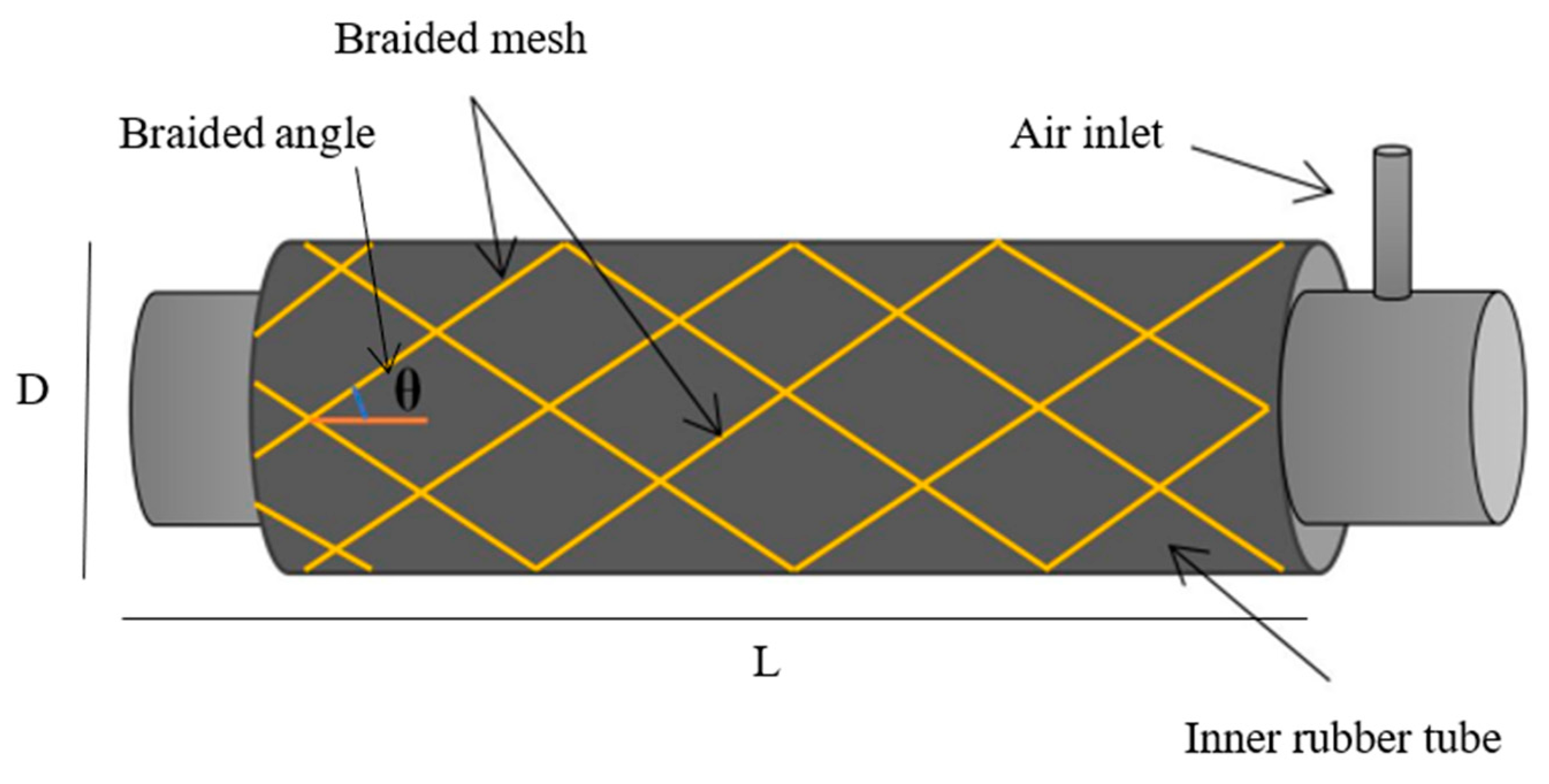
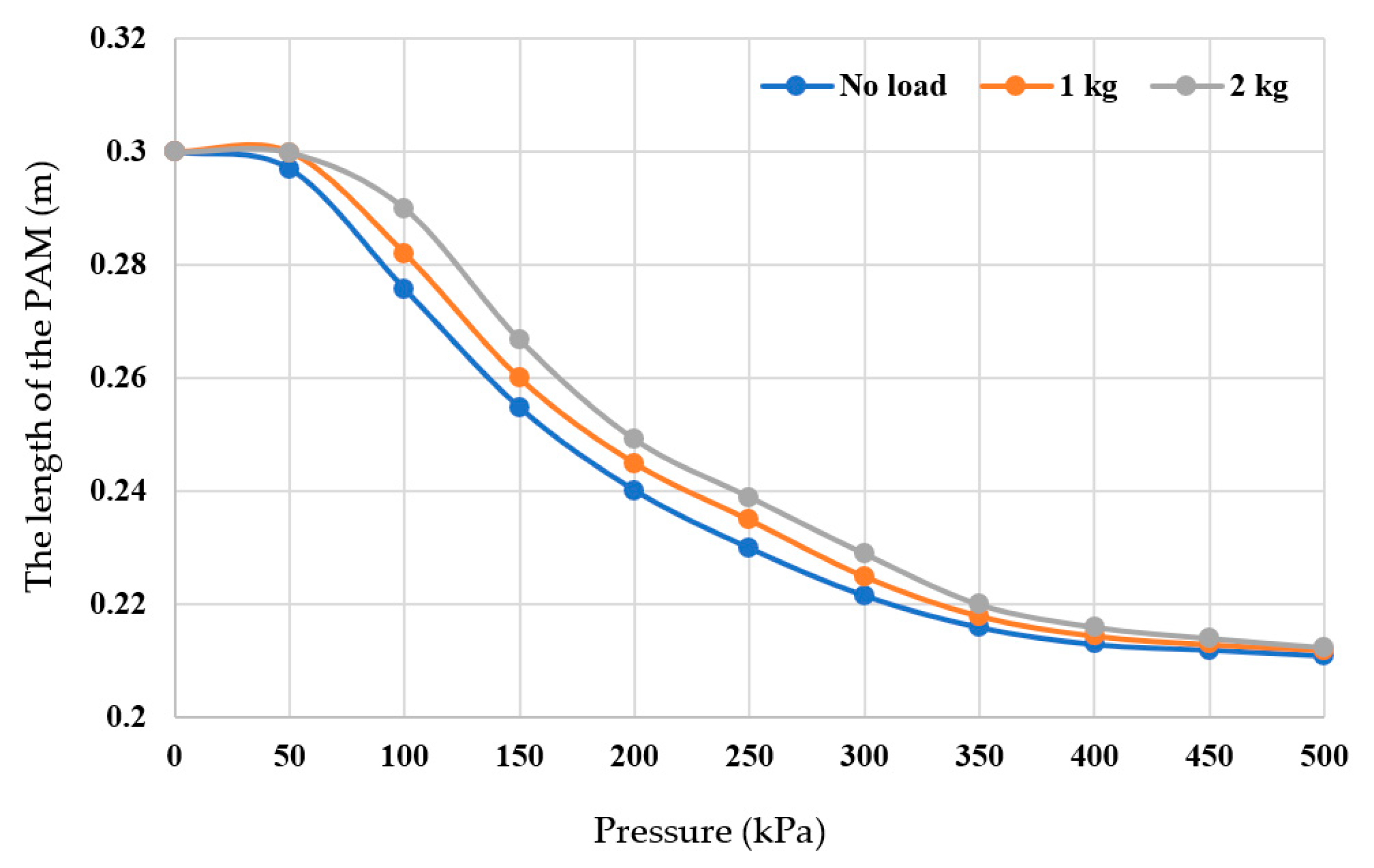

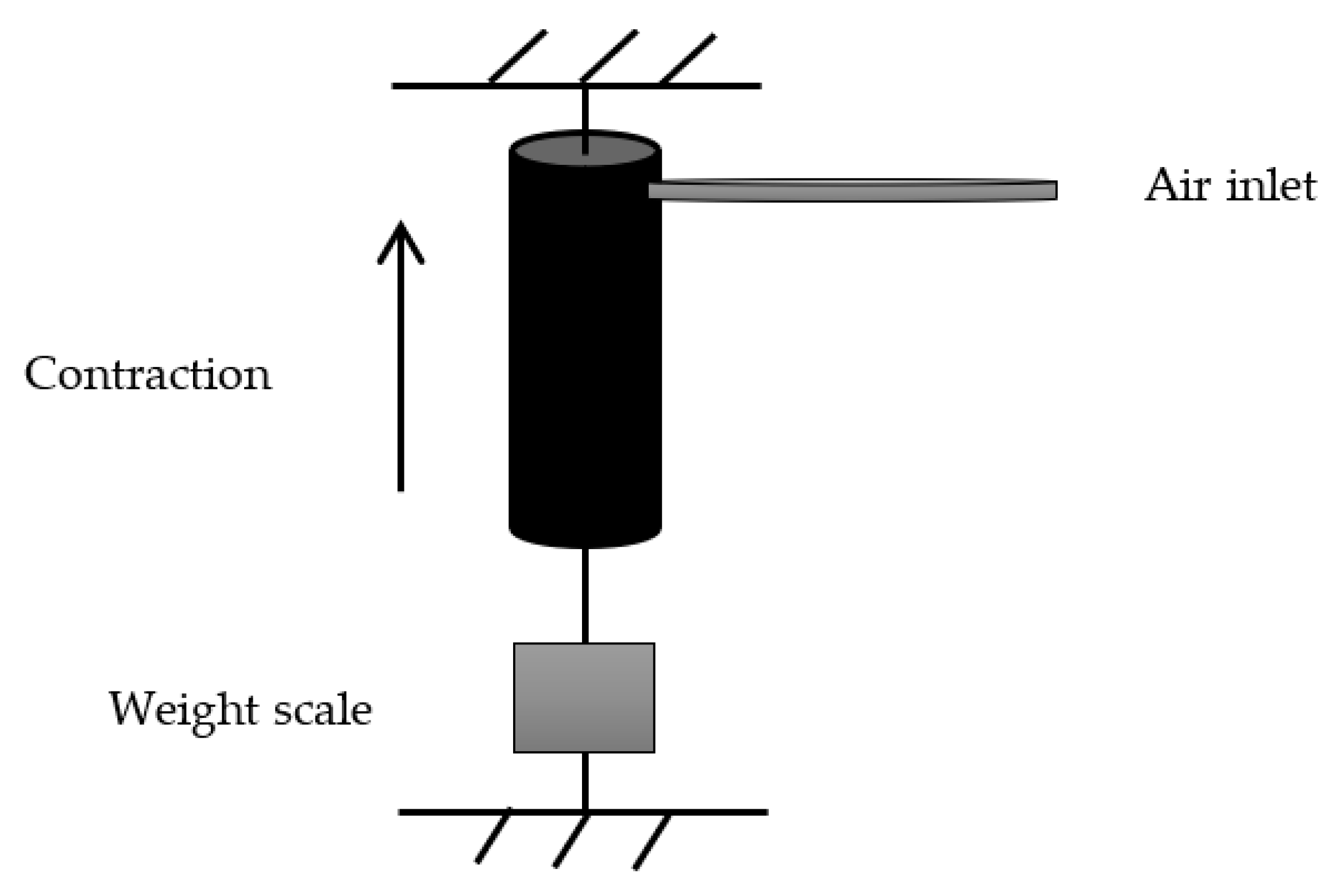
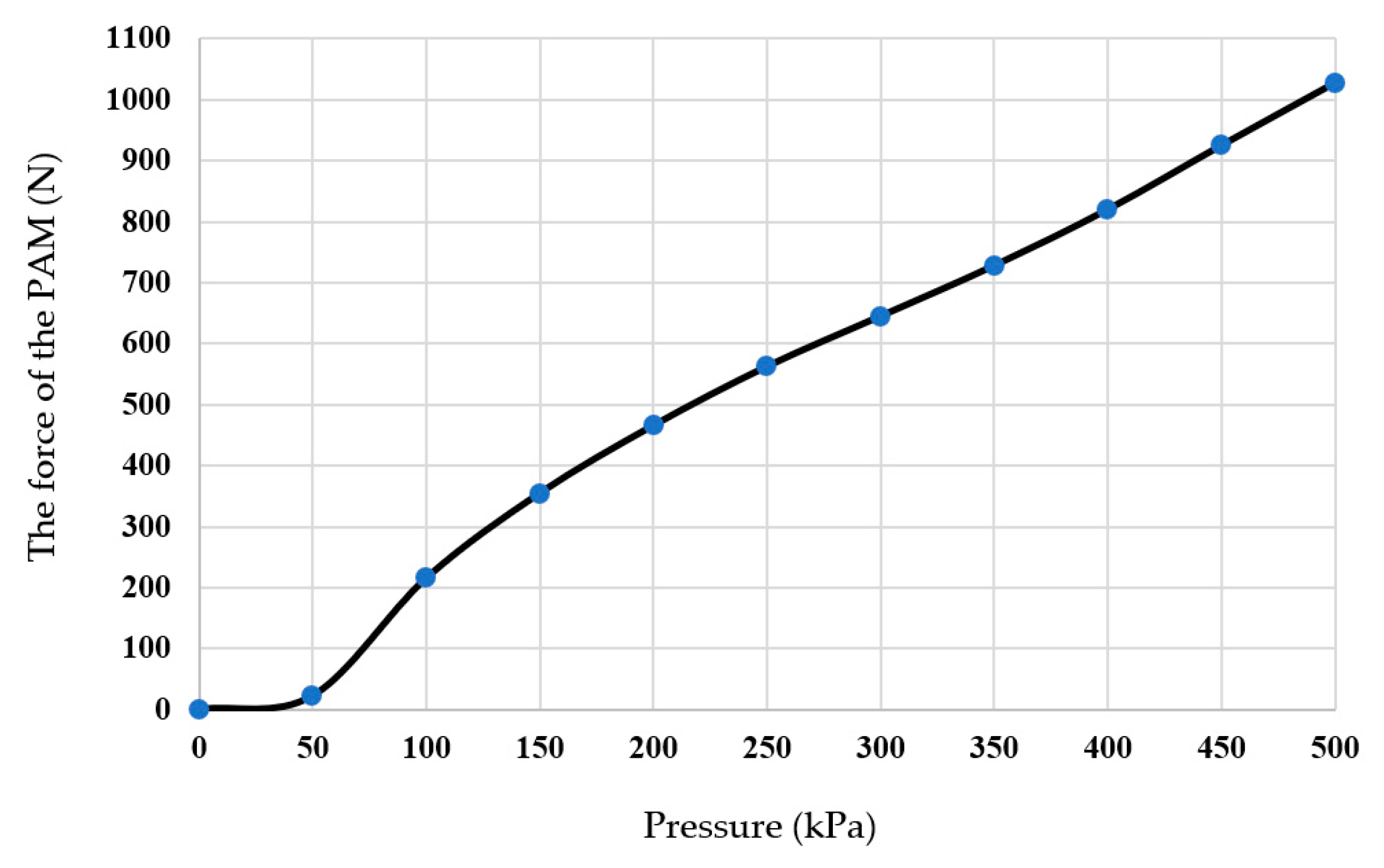

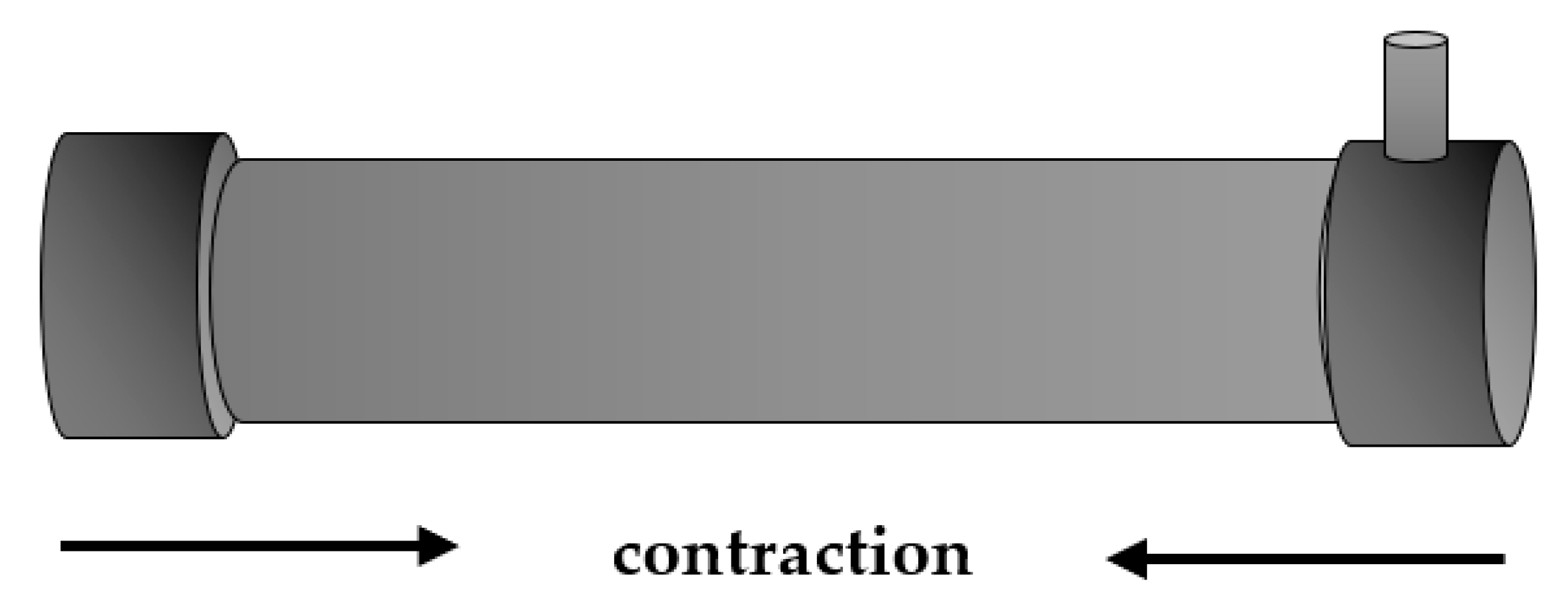


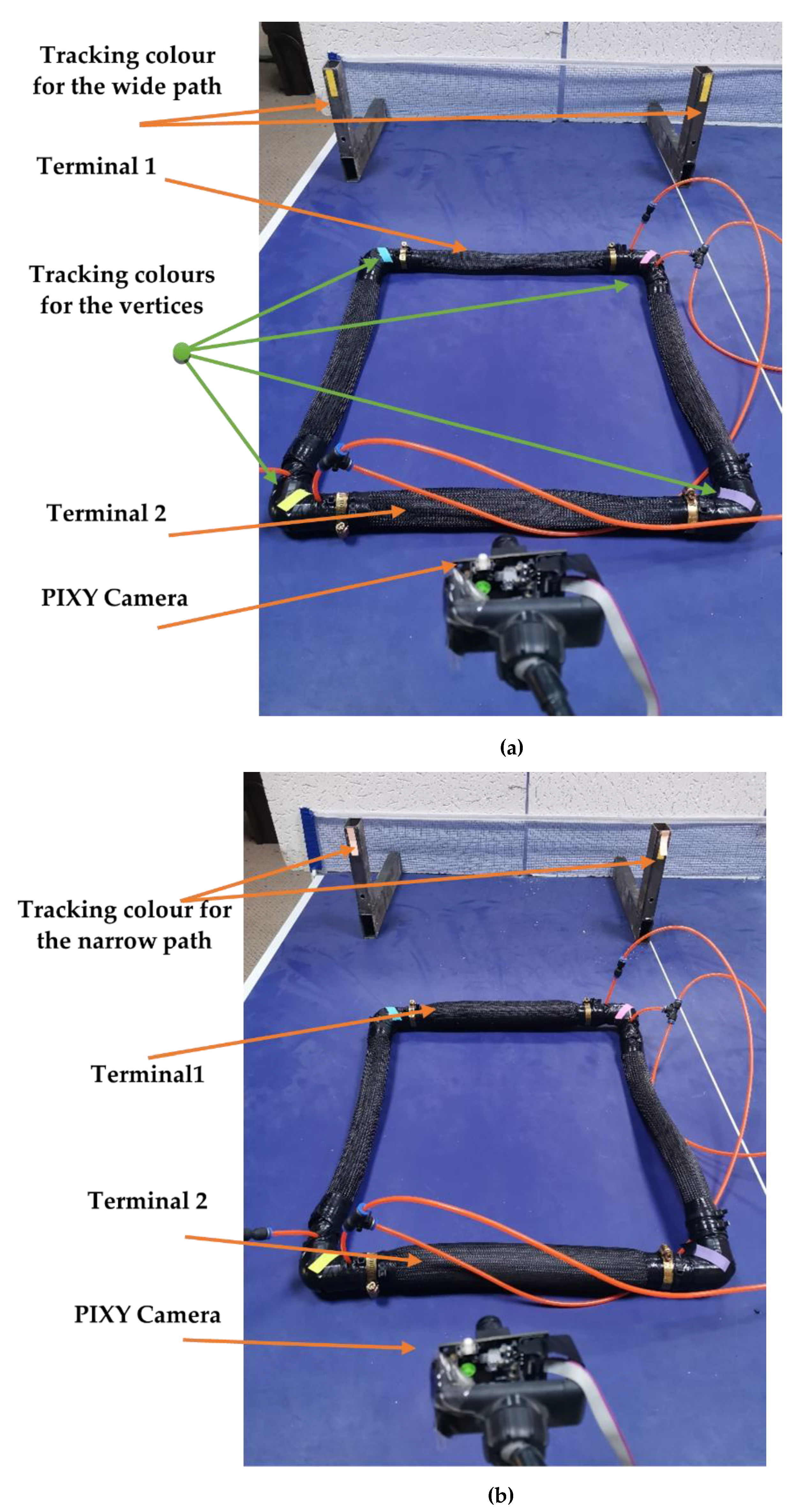

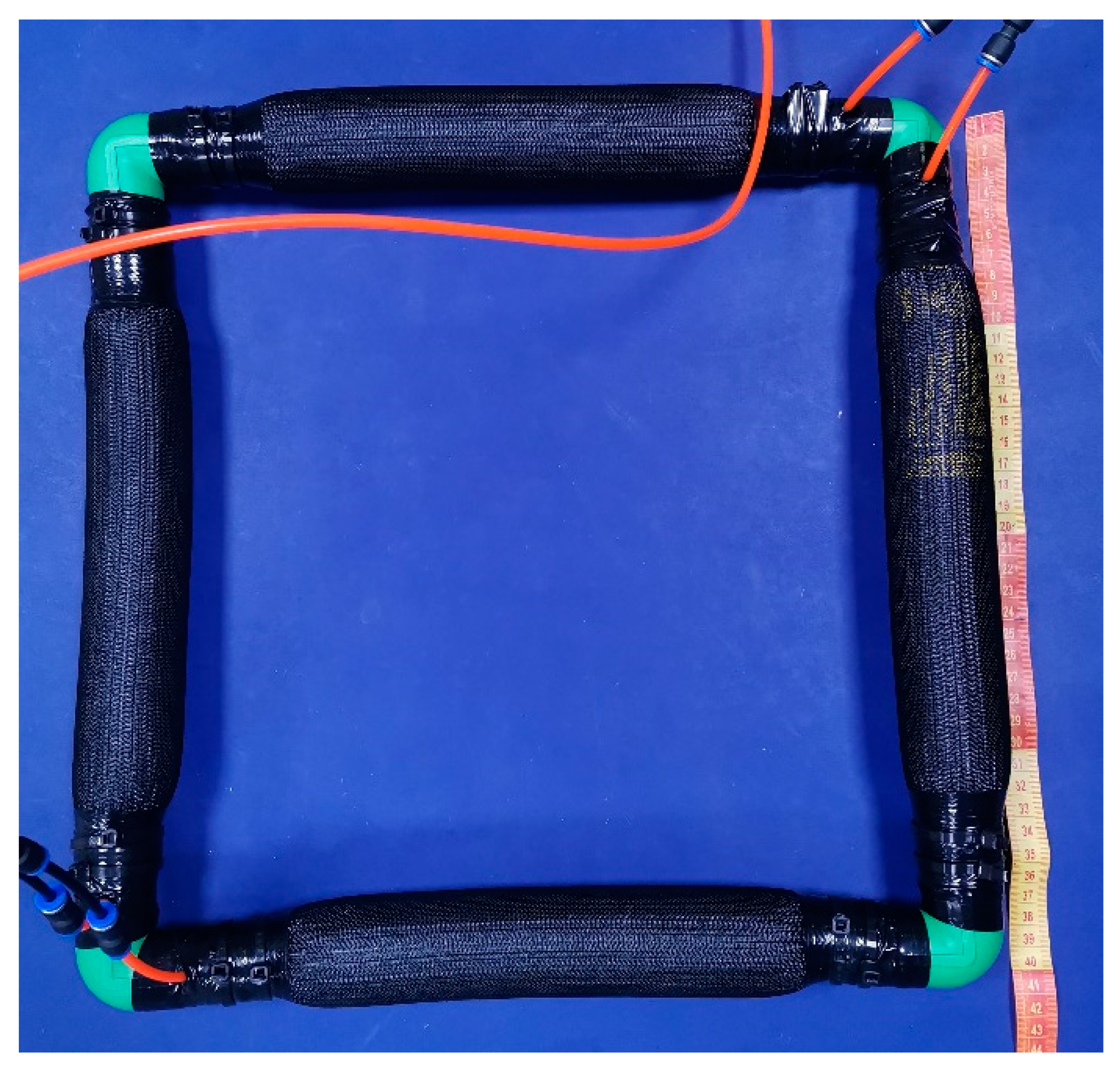

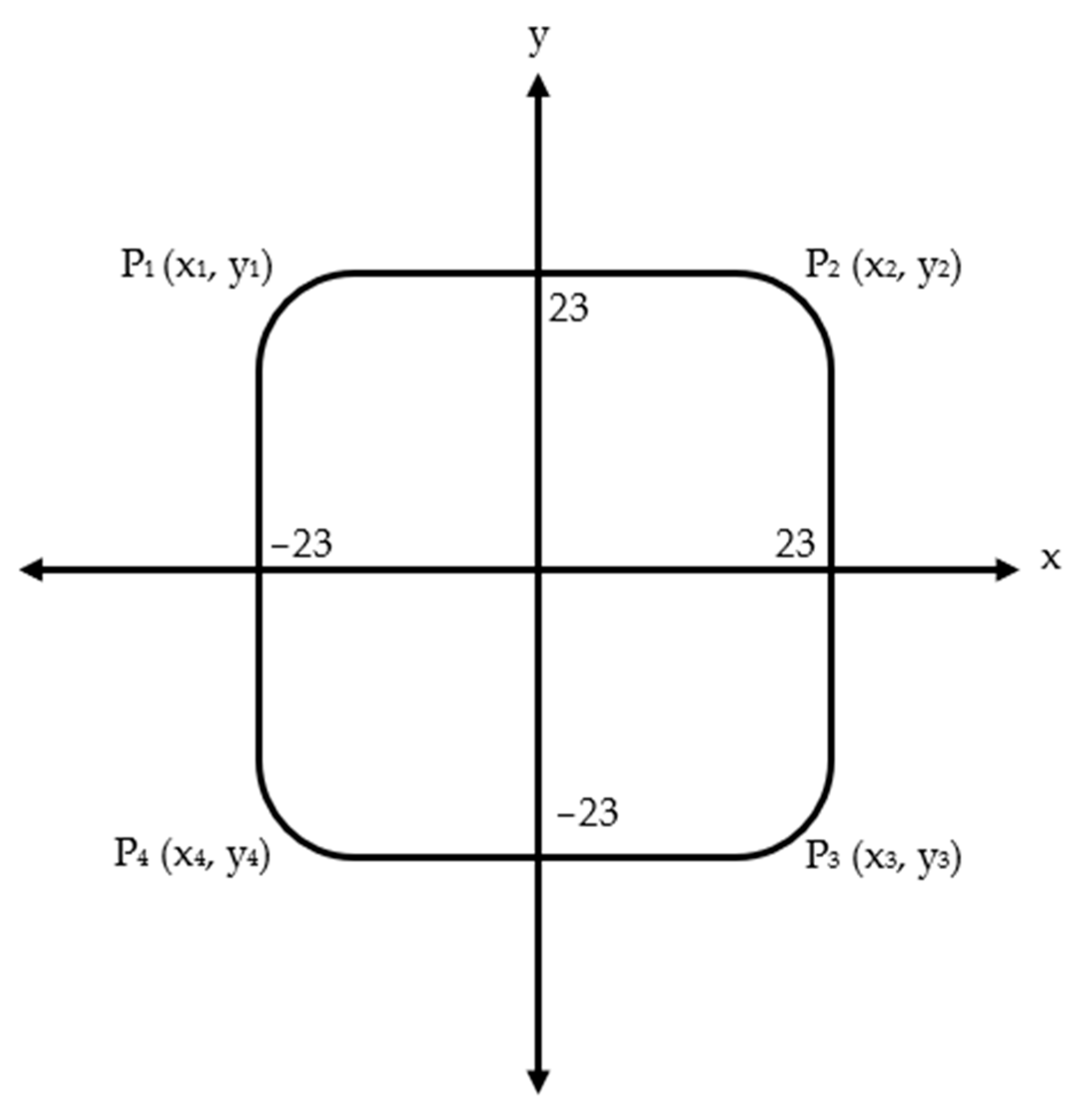
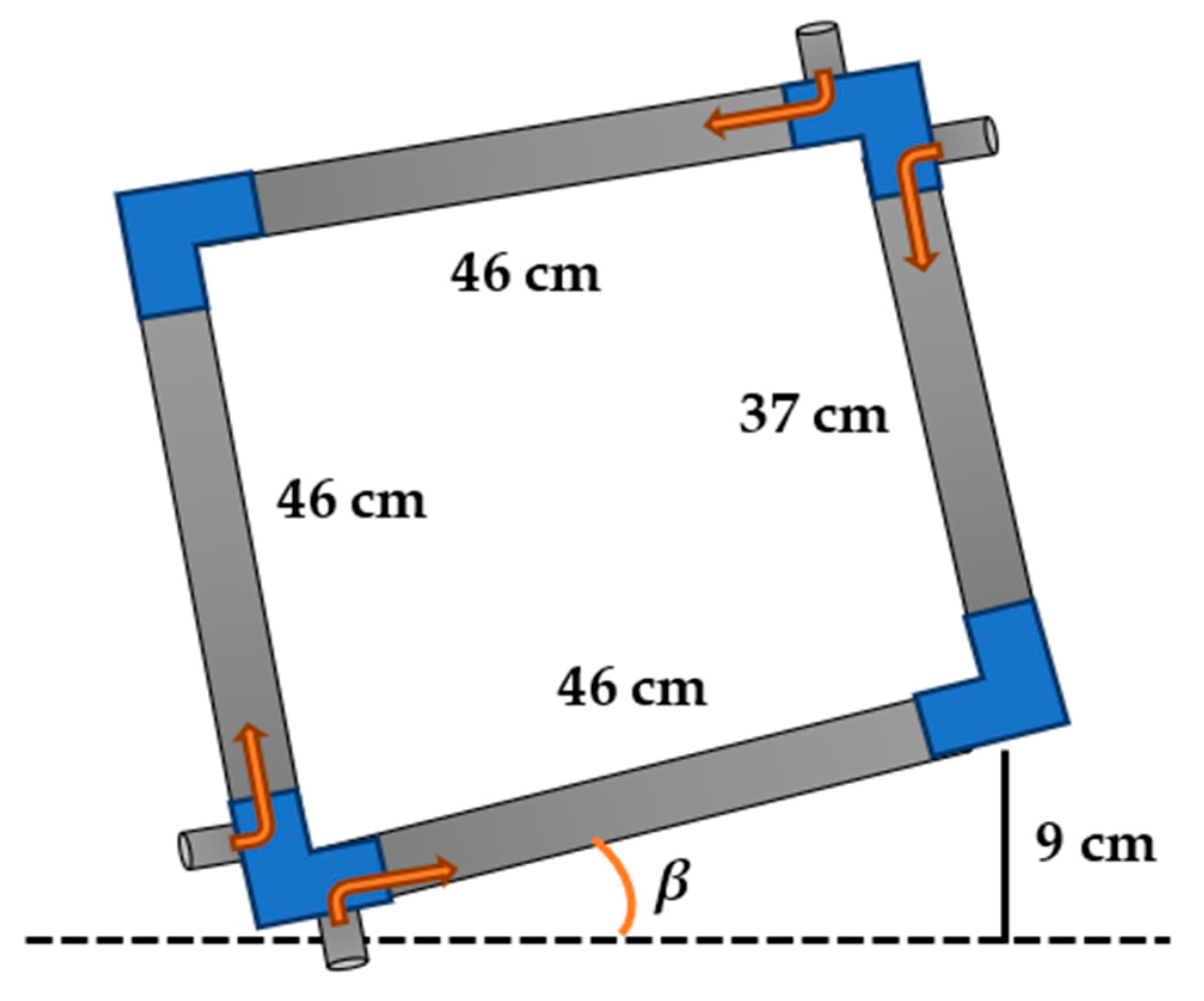
| Initial Length L0 (cm) | Initial Diameter D0 (cm) | Stiffness (N/m) |
|---|---|---|
| 30 | 2.8 | 545 |
| Initial Mesh Length (cm) | Initial Diameter D0 (cm) | Maximum Diameter (cm) | Expandable Ratio |
|---|---|---|---|
| 30 | 2.8 | 5.2 | 0.46 |
| Coordinates P1, P2, P3, and P4 | Area (cm2) by Theorem | Area (cm2) Geometry |
|---|---|---|
| (−23, 28), (23, 28), (23, −18), and (−23, −18) | 2116 | 2117.2 |
| (−20, 28), (20, 28), (20, −18), and (−20, −18) | 1840 | 1841 |
| (−23, 48), (23, 48), (23, 2), and (−23, 2) | 2116 | 2117 |
| (−20, 48), (20, 48), (20, 2), and (−20, 2) | 1840 | 1840.8 |
| (−22, 22.9), (22, 22.9), (20, −22.9), and (−20, −22.9) | 1923 | 1931 |
Publisher’s Note: MDPI stays neutral with regard to jurisdictional claims in published maps and institutional affiliations. |
© 2022 by the authors. Licensee MDPI, Basel, Switzerland. This article is an open access article distributed under the terms and conditions of the Creative Commons Attribution (CC BY) license (https://creativecommons.org/licenses/by/4.0/).
Share and Cite
Al-Ibadi, M.A.; Al-Assfor, F.K.; Al-Ibadi, A. An Automatic Self Shape-Shifting Soft Mobile Robot (A4SMR). Robotics 2022, 11, 118. https://doi.org/10.3390/robotics11060118
Al-Ibadi MA, Al-Assfor FK, Al-Ibadi A. An Automatic Self Shape-Shifting Soft Mobile Robot (A4SMR). Robotics. 2022; 11(6):118. https://doi.org/10.3390/robotics11060118
Chicago/Turabian StyleAl-Ibadi, Mohammed A., Fatemah K. Al-Assfor, and Alaa Al-Ibadi. 2022. "An Automatic Self Shape-Shifting Soft Mobile Robot (A4SMR)" Robotics 11, no. 6: 118. https://doi.org/10.3390/robotics11060118
APA StyleAl-Ibadi, M. A., Al-Assfor, F. K., & Al-Ibadi, A. (2022). An Automatic Self Shape-Shifting Soft Mobile Robot (A4SMR). Robotics, 11(6), 118. https://doi.org/10.3390/robotics11060118







